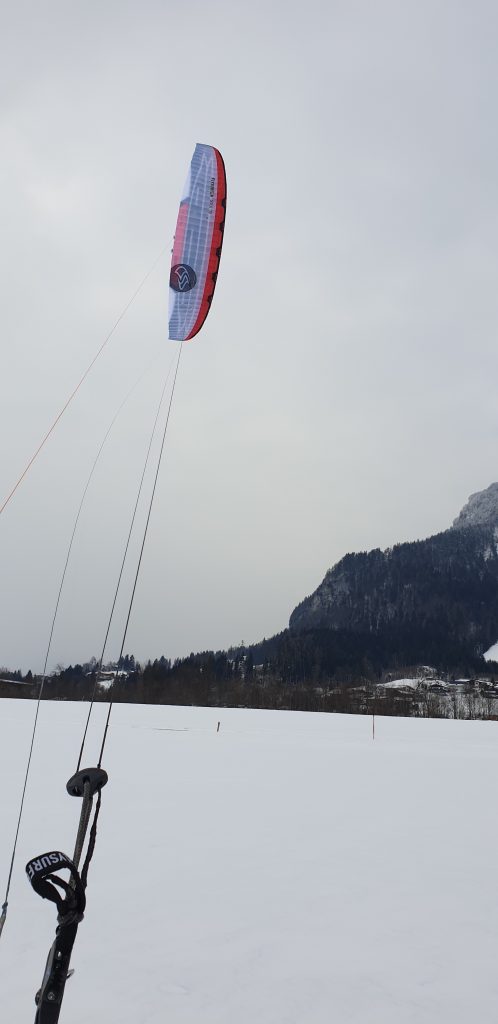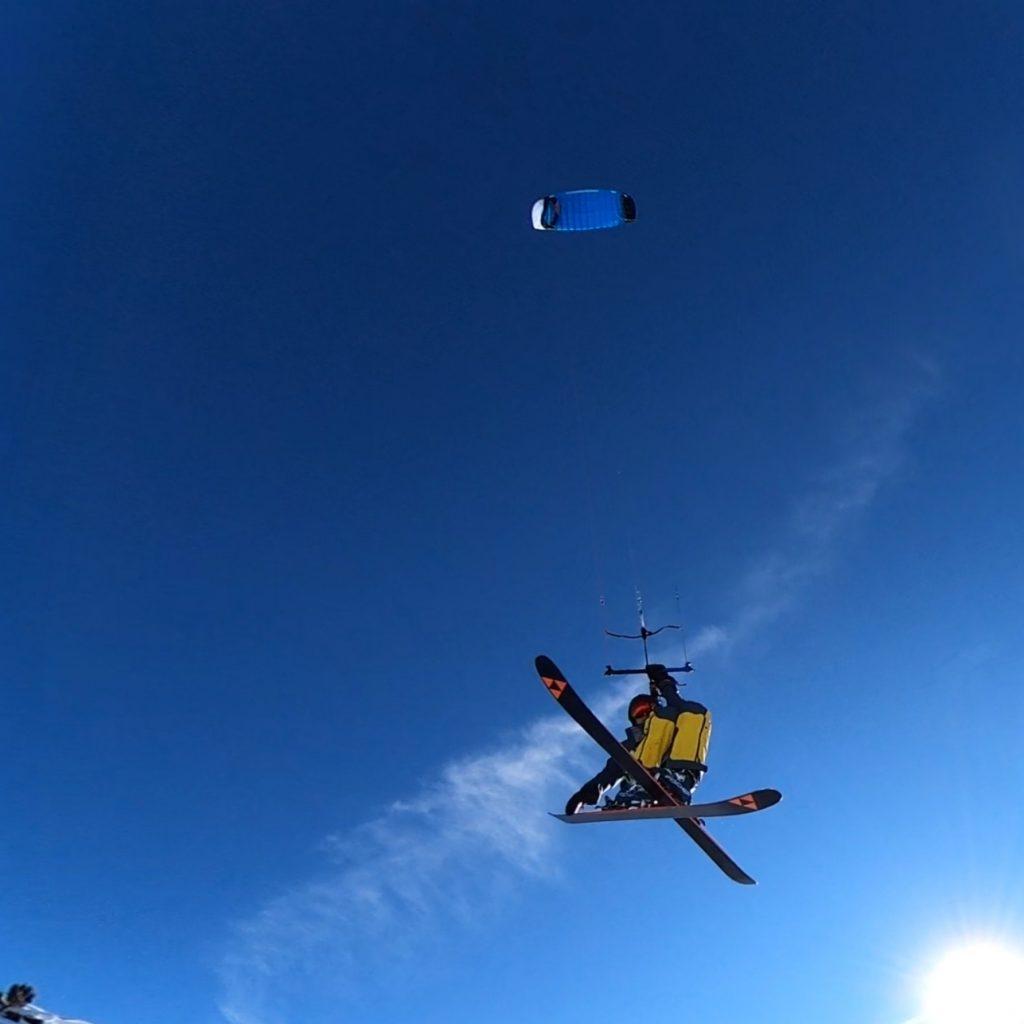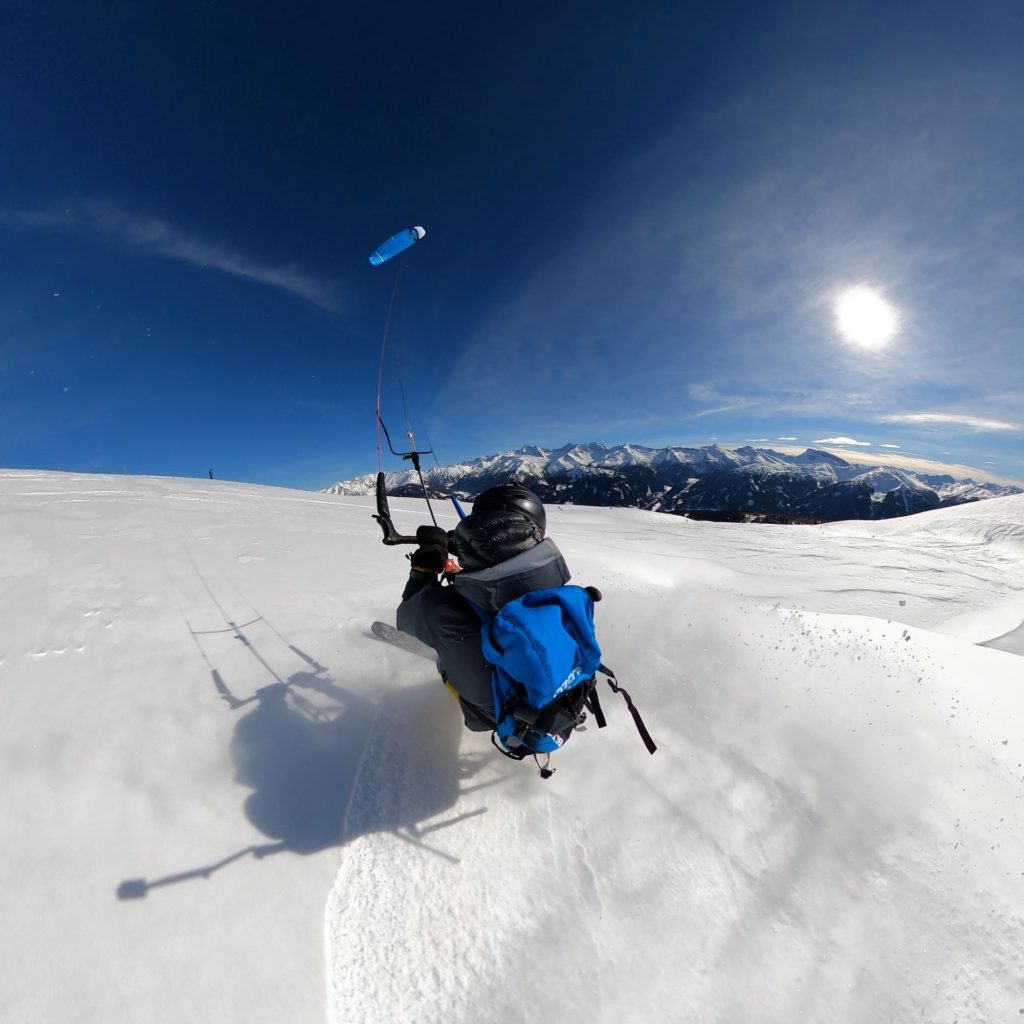Snowkiting in mountainous terrain generally means dealing with gusty conditions. While LEIs have the advantage of a rigid structure, they are often heavy and impractical for alpine terrain. Foil kites have a clear advantage. Recent developments in single skin kite designs (single skin kite comparison) are pushing the limit. They have a clear advantage over weight and simplicity, yet a disadvantage can be that they sometimes front-stall with a collapsing leading edge in very gusty conditions when flown close to the edge of the wind window. Ram pressure closed or open cell foil kites can have an advantage in gusty conditions in mountainous terrain.
It is worth looking at Flysurfer and Ozone ram pressure kites. I have tested the Flysurfer Soul (8 and 10m2), Ozone Subzero (9m2) and Ozone Hyperlink (9m2) recently.
Here are some design differences and unique features that I experienced on snow:

The Flysurfer Soul is a closed cell foil kite (9m2 Soul: aspect ratio: 5, weight 1.88 kg) , that can also be used on water. It can handle very gusty conditions. Compared to other closed cell foil kites the Soul behaves amazingly well during launching, even under gusty conditions. The turning radius is comparable to the Ozone Subzero, a dedicated open cell snowkite. The bar pressure on the Flysurfer Soul is generally less linear than on the Ozone Subzero and Hyperlink. That means that you have to fly the kite more aggressively during maneuvers.

The Ozone Subzero (formerly Blizzard: e.g. 9m2 aspect ratio: 4, weight 1.95 kg) is a dedicated open cell snowkite. It has a comparable turning radius to the Flysurfer Soul, and generally comes with a 5th line internal release system. This depower system gives you a very safe feeling because it allows to immediately depower the kite completely when you are on top of a ridge or during an emergency release. The open cell structure also helps to deflate the kite very fast if needed.
Snow vs Water: When releasing a closed cell kite on snow, it will twist and tangle very easily. In 9 out of 10 cases you will have to untangle a spaghetti bowl of twisted lines and bridle setup. This is somewhat different on water, since the kite material has better adhesion to the water surface than on snow, minimizing the problem of spinning and subsequently tangled bridle lines and twists in the kite. In my opinion the Flysurfer Soul design is particularly reliable on water. A dedicated open cell snowkite however is definitely superior during landing, parking and emergency release on snow.

The Ozone Hyperlink is a hybrid open or closed cell kite that can be flown in three configurations: closed cell 4 line (e.g. on water), open cell 4 line and open cell 5th line configuration. It has a higher aspect ratio (5.07) than the Ozone Subzero and thus a larger turning radius. The higher aspect ratio allows it to be used for flying and ridge soaring more easily (ie. take off with less speed) compared to the Ozone Subzero. When you want to fly (-> video), the Hyperlink is therefore a slightly better choice than the Ozone Subzero. For flying a higher aspect ratio is better, for climbing up a lower aspect radius improves the turning radius.
